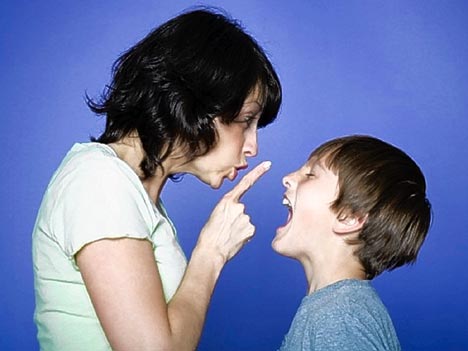Discipline is teaching of good and appropriate behavior. Effective parenting techniques use discipline proactively. All discipline techniques must be age-appropriate so that the child understands the difference between appropriate and inappropriate behavior. Babies less than 18 months old cannot understand these concepts. No one technique of discipline works for all situations. The wise parent develops a variety of skills and approaches, such as:
Ignoring annoying behavior when possible. Ignore behavior that will not harm your child, such as bad habits, whining, and tantrums. Never ignore potentially dangerous behavior. For example, if your child is whining in the grocery store, try saying "I can't hear you when you're whining," and then truly ignore them until the whining stops. Recognize, though, that ignoring annoying behavior only works if appropriate behavior is praised.
Set boundaries. At times, our children misbehave because they want us to tell them where "the line" is. For example, you might say, "You're welcome to play outside, but you must stay in the backyard."
Using facial expressions and body language to convey how you feel about your child's behavior. Facial expressions and body language can let your child know how disappointed you are in his or her inappropriate behavior.
Using logical consequences. Let the consequence make the point. For example, take away privileges that closely match a child's inappropriate actions. For example, if a child writes on the wall with crayons, have the child help you wash it and take away the crayons for a short time.
Redirecting behavior. For example, if you don't want your toddler to push the buttons on your keyboard, redirect his or her attention to a different, age-appropriate toy to play with.
Rewarding good behavior. Regardless of how cavalier your children may appear, they actually crave your approval and the acknowledgment of their achievements. Seek out opportunities to praise them each day.
Modeling correct behavior. Patiently show your child the right way to behave or do a chore.
Using time-outs wisely. Use "time-outs" after age 3 to respond to dangerous and harmful behavior such as biting, hitting, and purposeful destruction. Have the child sit in a place where there are no distractions. Explain what he or she did wrong and how to behave appropriately next time. Keep time-outs to 1 minute for every year of age, up to a maximum of 5 minutes. Use a timer. After a time-out, acknowledge when the child behaves correctly.
Source: WebMD

Your Baby checkup
what are the vaccinations that he should have taken until now?
Generate a report for my baby.
Track Your Baby Vaccinations
Find Your Baby name
Mohandessin
01002195777
01000012400
0233048350
Beverly Hills
01000012900
0238576831
El Tagamo3
Al Sheikh Zayed
02- 38514031
01000608597


